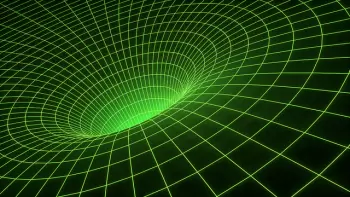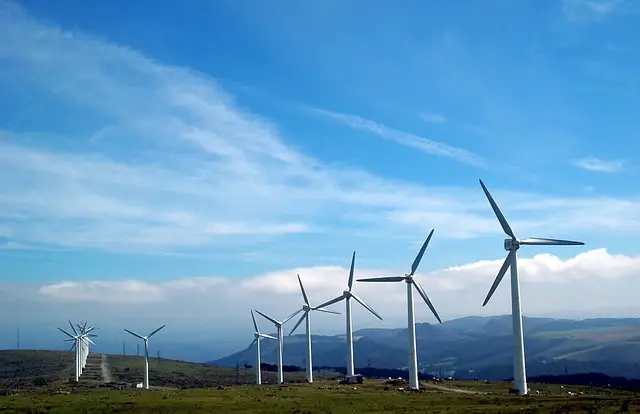
The Law of Conservation of Energy, also known as the First Law of Thermodynamics, is one of the fundamental concepts in the physics that governs our universe.
Throughout the history of science, this law has been a fundamental pillar that has allowed us to understand and explain a wide range of natural phenomena.
Origin and author
The idea of energy conservation began to take shape in the 19th century thanks to the work of scientists such as Julius Robert Mayer, James Joule, and Hermann von Helmholtz. These researchers carried out exhaustive studies on the conversion of thermal energy into mechanical energy and vice versa.
However, the best-known formulation of this law is attributed to Rudolf Clausius and William Thomson (Lord Kelvin) in the mid-19th century.
What does the law of conservation of energy establish?
This law states that energy cannot be created or destroyed, only transformed from one form to another. That is, the total amount of it in an isolated system does not vary with time.
This means that, in the absence of external forces, the total energy of a system is conserved, even if it undergoes transformations from one type of energy to another. For example, in a closed system, mechanical energy can be converted to thermal energy due to friction, but the sum total of both forms of energy will remain constant.
From Newtonian mechanics
In Newtonian mechanics, the principle of conservation states that: “The total mechanical energy of a closed system of bodies, between which only the internal forces of the system act, remains constant.”
Simply put, in the absence of dissipative forces (e.g. frictional forces), energy does not arise from nothing and cannot disappear. They can only be converted into other types of energy.
From thermodynamics
In thermodynamics, the conservation law is formulated as the first law of thermodynamics : “The amount of heat received by the system is used to change its internal energy and perform work against external forces.”
The law of conservation of energy states that there are no perpetual motion machines of the first type. Sadi Carnot showed that such processes are impossible.
Examples of the law
To better understand the Law of Conservation of Energy, it is useful to see some concrete examples of how it works in everyday and scientific situations:
Simple pendulum
Imagine a simple pendulum, like a clock pendulum. When you lift the pendulum to a certain height and release it, it begins to swing back and forth. As it descends, its gravitational potential energy decreases, but its kinetic energy increases.
The sum of potential and kinetic energy at any point in its motion will always be constant if there are no friction forces or air resistance involved.
Freefall
When you drop an object from a certain height, its gravitational potential energy is converted to kinetic energy as it falls.
The law of conservation of energy states that the sum of these two forms of energy is constant during the fall.
moving car
 When a car is moving at a certain constant speed, it has kinetic energy due to its motion.
When a car is moving at a certain constant speed, it has kinetic energy due to its motion.
If the driver turns off the engine, the car will continue moving due to inertia, and its kinetic energy will remain constant until some friction force occurs, such as braking, which converts the kinetic energy into thermal energy through the heat generated by the wheels. brakes.
Energy transformation in a power plant
In a conventional thermal power plant, the chemical energy stored in the fuel (such as coal or gas) is converted into thermal energy through combustion. This thermal energy is then used to heat water and produce steam, which drives a turbine connected to an electrical generator. The thermal energy is converted into mechanical energy in the turbine and finally into electrical energy in the generator.
In the same way, a nuclear power plant can carry out the same process but instead of starting with the chemical energy of fossil fuels, the thermal energy is obtained from the nuclear energy obtained by fissioning an atom.
In both cases, throughout all these transformations, the total energy is conserved, although it changes form.
Nuclear reaction in the Sun
In the core of the Sun, a nuclear reaction called nuclear fusion occurs, in which hydrogen nuclei combine to form helium.
During this reaction, a small amount of mass is converted into energy, according to Einstein's famous equation, E=mc 2 . The energy released in the form of light and heat is constant, which keeps the Sun shining for billions of years.
A roller coaster
A roller coaster car makes several conversions of potential energy and kinetic energy with each ride. When it is at the highest, almost all the energy is gravitational potential energy. Then, as it goes down, the speed increases and the energy is transformed into kinetic energy.
Importance in physics
 The law of conservation of energy is a fundamental pillar in physics and has a wide range of applications in various branches of science. Some of the areas where this law plays a crucial role include:
The law of conservation of energy is a fundamental pillar in physics and has a wide range of applications in various branches of science. Some of the areas where this law plays a crucial role include:
- Thermodynamic physics : Thermodynamics, the branch of physics that studies the relationships between heat, work and energy, is based on the law of conservation of energy. This law allows us to understand how engines, heat engines and cooling systems work.
- Mechanics : In classical mechanics, conservation of energy is used to solve problems related to the kinematics and dynamics of moving objects. Kinetic and potential energy are examples of forms of energy whose conservation is essential in this context.
- Electrodynamics and electromagnetism – This principle is also applicable in the field of electricity and magnetism. In electrical circuits, for example, electrical energy is transformed into light energy in light bulbs or into thermal energy in heating devices.
- Nuclear physics : In nuclear physics, this law is essential to understanding nuclear reactions and the energy released in processes such as fusion and nuclear fission.


